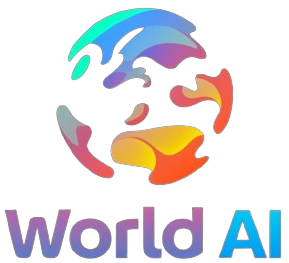AI Generator: The Future of Creative Content
You seem to be referring to an AI generator. AI generators can take many forms, depending on what they produce. Common types of AI generators include:https://worldai.today/

Text Generators ai : These are AI models (like me, Chat GPT) designed to generate text based on prompts. They can be used for a variety of purposes, including writing assistance, content creation, chatbots, and more.
Image Generators AI : models that generate images or artwork. These can be based on textual descriptions (like DALL-E) or can modify and create variations of existing images.
Music Generators AI : systems that can compose music or generate new soundscapes. These can range from simple melody generators to complex systems capable of creating full compositions.
Code Generators AI: tools designed to assist in writing code. They can suggest code snippets, complete programming assignments, or even generate code from descriptions.
Data Generators These AI : systems generate synthetic data for testing or training purposes. This can be especially useful in situations where real data is sensitive or scarce.
Voice Generators AI : models that synthesize speech, often used in voice assistants, audiobook readings, or to provide accessibility features for text content.
Each of these AI generators uses different types of neural networks and training data to accomplish their tasks. If you have a specific type of AI generator in mind, I can provide more detailed information or examples
type of AI generator
Text Generators:
Chat GPT: That’s me! I’m an example of a text generator developed by Open AI, capable of conversing, answering questions, and generating text based on prompts
GPT-3: The predecessor to Chat GPT, widely used for various applications including content creation, language translation, and more
Image Generators:https://pixlr.com/image-generator/
DALL-E: Developed by Open AI, this AI can create images from textual descriptions, producing a wide range of artworks and visuals based on user prompts.
Deep Art: An AI that transforms photos into artworks using the styles of famous artists like Van Gogh, Picasso, etc.
Music Generators:
AIVA (Artificial Intelligence Virtual Artist): An AI composer that creates musical pieces used in soundtracks for films, games, and commercials
Jukedeck: A platform that used AI to create music and soundtracks, especially useful for content creators needing royalty-free music.
:Code Generators
GitHub Copilot: Powered by Open AI, it assists programmers by suggesting whole lines or blocks of code as they type
Tabnine: An AI-powered code completion tool that supports multiple programming languages and integrates with various IDEs
.
Data Generators:
Mocka roo: A tool for generating large datasets of fake data for testing and development purposes
Synthea: An open-source project that generates synthetic patient data for healthcare software testing
Voice Generators:
Google Wave Net: Ai deep neural network for generating raw audio, used in Google Assistant and other speech synthesis applications.
Descript is Overdub: Allows the creation of a text-to-speech model of your own voice, useful for podcasters and content creators.
These examples illustrate the breadth of applications for AI generators, demonstrating their versatility and impact across various industries and creative endeavors.
These additional examples further showcase the diverse capabilities of AI generators in various fields, from creative arts to software development and beyond
Text Generators:
BERT and its derivatives (like RoB ERTa): Developed by Google, BERT is designed to understand the context of a word in a sentence. It’s widely used in search engines and for improving natural language processing tasks.
AI21 Labs’ Jurassic-1: Similar to GPT-3, this large language model is designed for various text generation tasks, offering a different approach to language understanding and generation.
Image Generators:
Adobe Photoshop’s Neural Filters: Leveraging AI, these filters can perform complex edits like changing facial expressions, age, or even the direction of light.
Runway ML: An easy-to-use platform for creatives to use machine learning models for image and video generation, and editing tasks.
Music Generators:
Open AI’s Muse Net: This deep neural network is capable of generating 4-minute musical compositions with 10 different instruments, and can combine styles from classical to country to rock.
Amper Music: An AI music composition tool tailored for content creators to quickly create and customize music for vide
Code Generators:
Kite: An AI-powered coding assistant that helps developers write code faster by providing intelligent completions in their code editor.
Source AI: A tool that generates code from plain English descriptions, aiming to help developers speed up the coding process.
Data Generators:
Tonic.ai: Specializes in creating fake but realistic data for software testing, ensuring privacy compliance by mimicking real datasets
.Data Robot: While primarily an automated machine learning platform, it also includes features for data generation and augmentation.
Voice Generators:
IBM Watson Text to Speech: Converts written text into natural-sounding audio in a variety of languages and voices.
yrebird AI: Now part of Descript, it offers the ability to create digital voices that sound like specific individuals, useful for personalized text-to-speech applications.


Pingback: The Top 10 (AI) Artificial Intelligence Applications Revolutionizing Tech in 2024 - World Ai